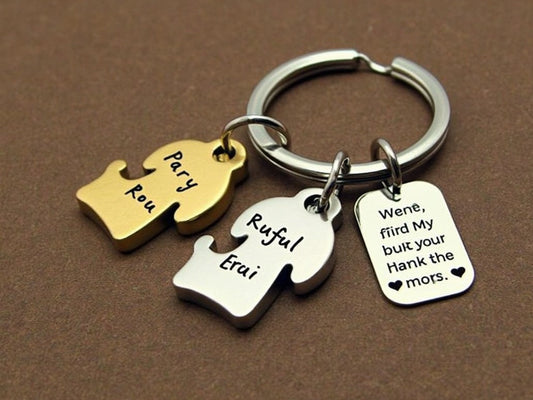Your cat's secretly judging your décor—here's how to win them back. Indoor cats need stimulating environments and activities to thrive mentally and physically, preventing the common pitfalls of boredom and weight gain that can affect their overall quality of life.
Key Takeaways:
- Indoor cats require daily enrichment activities to satisfy natural hunting and climbing instincts
- Creating dedicated spaces like catios can provide safe outdoor experiences without the associated risks
- Regular play sessions and interactive toys help prevent behavioral problems and obesity in indoor cats
- Rotating toys and activities keeps your cat mentally engaged and prevents boredom
- Personalized enrichment based on your cat's individual preferences creates a happier, healthier pet
Why Indoor Cats Need Enrichment
Indoor cats live longer, safer lives than their outdoor counterparts, but they face a significant challenge: limited environmental stimulation. Without proper enrichment, indoor cats can develop stress, obesity, and unwanted behaviors like excessive grooming or furniture destruction. According to ManyPets data, cats with proper enrichment can enjoy the mental benefits of outdoor exploration without the dangers. As natural hunters and climbers, cats need outlets for these instincts even in confined spaces. I've found that addressing these needs proactively creates a happier household for everyone involved. #IndoorCatLife brings unique challenges but also offers opportunities for creative solutions that strengthen your bond with your feline friend.

Creating Interactive Play Spaces
The foundation of cat enrichment starts with dedicated climbing and exploration zones. Cats naturally seek vertical space to survey their territory and feel secure. Cat trees, wall-mounted shelves, and window perches give your cat the elevation they crave while saving your furniture from becoming an impromptu climbing gym. For maximum engagement, place these features near windows where cats can watch outdoor activity. Many cat parents don't realize that even a small apartment can be transformed into a feline playground with thoughtful vertical space utilization.
Interactive toys serve as vital tools for mental and physical stimulation. Rotating between puzzle feeders, motion-activated toys, and classic wand toys prevents the boredom that comes from toy familiarity. As a cat owner, I've discovered that scheduling regular play sessions helps maintain your cat's interest and provides valuable bonding time. Supetmon offers custom anime gifts that can add personality to your cat's play space while reflecting your shared interests. #CatHacks that incorporate play with feeding can mimic natural hunting behaviors and provide double the enrichment value.
Outdoor Experiences Without the Risks
Catios represent the perfect compromise between outdoor freedom and indoor safety. These enclosed outdoor spaces allow cats to experience fresh air, sunlight, and natural stimulation without exposure to predators, traffic, or toxic plants. They can be as simple as a screened window box or as elaborate as a fully furnished porch enclosure. For apartment dwellers, even a secured balcony with cat-safe plants creates a breath of fresh air for your indoor companion.
If a physical outdoor space isn't possible, sensory enrichment becomes essential. Cat-safe plants like cat grass, catnip, and silver vine bring the outdoors inside. Nature videos designed for cats, featuring birds and small prey, can captivate their attention for hours. I've placed bird feeders outside windows to create a "cat TV" effect that provides endless entertainment. These approaches satisfy your cat's curiosity about the outside world without compromising their safety.
Cognitive Challenges for Mental Health
Cats are intelligent creatures that benefit from problem-solving opportunities. Puzzle feeders and treat-dispensing toys make your cat work for their food, simulating the mental challenge of hunting. Training sessions using positive reinforcement can teach cats tricks while providing mental stimulation. Many cat owners are surprised to learn that cats can be trained similarly to dogs, with clicker training being particularly effective.
Food-oriented enrichment combines mental exercise with mealtime. Try these feeding enrichment ideas to challenge your cat's problem-solving abilities:
- Hide small portions of food throughout the house for your cat to "hunt"
- Use muffin tins with balls covering food in some compartments
- Freeze wet food in ice cube trays for a longer-lasting treat challenge
- Create DIY puzzles using toilet paper tubes or egg cartons
These cognitive challenges prevent boredom and keep your cat's mind sharp, which is especially important for senior cats. Custom Pokémon gifts from specialty retailers like Supetmon can also make unique hiding spots for treats, combining your interests with your cat's enrichment needs.
Social Enrichment and Companionship
Contrary to their independent reputation, most cats crave social interaction. Dedicated daily attention from human family members helps prevent loneliness and depression in solo cats. For households with the capacity for multiple pets, consider adopting a compatible feline friend. Many cats thrive with companionship, though introductions must be handled carefully and gradually.
When you can't be home, technology offers solutions. Remote-controlled toys, automated feeders with cameras, and pet monitors let you interact with your cat even when you're away. These tools can reduce separation anxiety and provide entertainment during your absence. I've found that cats quickly learn to recognize these interactions and look forward to them as part of their daily routine.
Creating Sensory-Rich Environments
Cats experience the world through their highly developed senses. Window perches satisfy visual stimulation needs while bird feeders outside windows create moving targets for hunting instincts. Scratching posts with different textures address tactile needs and help maintain claw health. Cats prefer a variety of scratching surfaces, from sisal rope to corrugated cardboard, placed throughout the home.
Auditory enrichment through nature sounds or calming music designed specifically for cats can reduce stress and create a more stimulating environment. Some cats enjoy the sounds of birds, while others prefer classical music or white noise. Rotating different scents through cat-safe essential oils or herbs gives your cat's sensitive nose new experiences. These sensory elements combined create an environment that keeps your cat engaged and prevents the under-stimulation that leads to behavioral issues.
Rotating Enrichment to Maintain Interest
Cats quickly grow bored with constant stimulation from the same sources. Creating an enrichment rotation schedule prevents habituation and maintains novelty. Store toys in separate containers and swap them weekly, making old toys seem new again. This practice saves money while maximizing the value of existing toys. Your cat's secretly judging your décor—here's how to win them back with fresh arrangements and new play opportunities that keep them guessing.
Seasonal changes provide natural opportunities for enrichment updates. In summer, focus on cooling enrichment like frozen treats and water play. Winter calls for warm snuggle spots and indoor activity centers. Tracking your cat's preferences and reactions to different enrichment types helps you refine your approach. I maintain a simple journal noting which activities generate the most enthusiasm, allowing for personalized enrichment tailored to my cat's individual personality.
DIY Enrichment on a Budget
Effective cat enrichment doesn't require expensive commercial products. Household items can become engaging toys with minimal effort. Paper bags with handles removed, cardboard boxes configured into tunnels, and toilet paper tubes filled with treats provide free entertainment. Homemade wand toys created from dowels, string, and feathers often become favorite playthings.
For the crafty cat parent, DIY projects offer customized solutions. Consider these budget-friendly enrichment ideas:
- Create a fishing pole toy using a dowel, string, and fabric scraps
- Repurpose a cardboard box into a hide-and-seek toy by cutting holes
- Make a puzzle feeder from a plastic container with holes
- Construct a simple window perch using brackets and a cushion
These projects can be personalized with uncommon goods ideas for Pokemon fans or themed to match your home décor, making them both functional and aesthetically pleasing additions to your living space.
Grooming and Physical Comfort
Regular grooming sessions serve as both physical care and bonding time. Brushing removes loose hair, preventing hairballs while giving your cat welcome attention. Different coat types require specific brushes, from slicker brushes for long-haired cats to rubber curry combs for short coats. Many cats grow to enjoy these sessions when introduced gently and associated with rewards.
Creating comfortable resting spots throughout your home addresses your cat's need for security and comfort. Cats prefer varied sleeping options at different heights and temperatures. Window perches for sunny spots, caves for hiding, and soft beds for joint support, especially in older cats, create a well-rounded environment. Don't forget to place beds in both quiet and social areas of your home to accommodate your cat's changing mood and need for either company or solitude. #PetMonday is the perfect time to refresh these spaces and ensure they remain inviting.
Tailoring Enrichment to Your Cat's Personality
Every cat has a unique personality and preferences. Shy cats may prefer solo play with self-operating toys, while confident cats often enjoy interactive games with their humans. Age also affects enrichment needs – kittens require more physical play, while senior cats benefit from gentler mental stimulation. Observing your cat's natural behaviors provides clues to their enrichment preferences. A cat who paws under doors might enjoy fishing toys, while one who climbs furniture needs vertical spaces.
Start with small changes and monitor your cat's response. Some cats feel overwhelmed by too many new items at once. Introduce enrichment gradually and build on successful elements. This approach creates a customized enrichment plan that evolves with your cat's changing needs throughout their life. The most effective enrichment strategy is one that responds to your individual cat rather than following a one-size-fits-all approach.
Sources: ManyPets




